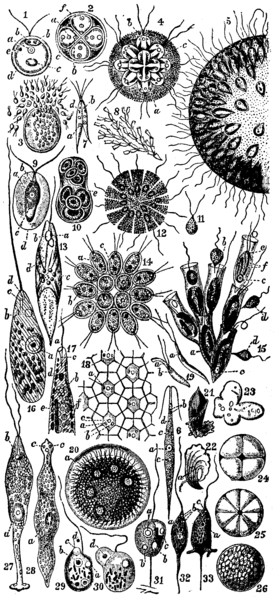پرونده:Flagellata 1.png

اندازهٔ این پیشنمایش: ۲۷۸ × ۶۰۰ پیکسل. کیفیتهای دیگر: ۱۱۱ × ۲۴۰ پیکسل | ۲۲۲ × ۴۸۰ پیکسل | ۹۹۰ × ۲٬۱۳۶ پیکسل.
پروندهٔ اصلی (۹۹۰ × ۲٬۱۳۶ پیکسل، اندازهٔ پرونده: ۱۴۷ کیلوبایت، نوع MIME پرونده: image/png)
تاریخچهٔ پرونده
روی تاریخ/زمانها کلیک کنید تا نسخهٔ مربوط به آن هنگام را ببینید.
| تاریخ/زمان | بندانگشتی | ابعاد | کاربر | توضیح | |
|---|---|---|---|---|---|
| کنونی | ۱۲ آوریل ۲۰۰۶، ساعت ۱۳:۵۹ |  | ۹۹۰ در ۲٬۱۳۶ (۱۴۷ کیلوبایت) | Jjbeard | {{PD-Britannica}} Category:Images from Encyclopædia Britannica This image has an extensive caption. Please refer to the EB1911 article for the text of this caption. |
کاربرد پرونده
صفحهٔ زیر از این تصویر استفاده میکند:
کاربرد سراسری پرونده
ویکیهای دیگر زیر از این پرونده استفاده میکنند:
- کاربرد در af.wikipedia.org
- کاربرد در ar.wikipedia.org
- کاربرد در bs.wikipedia.org
- کاربرد در en.wikipedia.org
- کاربرد در gl.wikipedia.org
- کاربرد در id.wikipedia.org
- کاربرد در jv.wikipedia.org
- کاربرد در ka.wikipedia.org
- کاربرد در ko.wikipedia.org
- کاربرد در lfn.wikipedia.org
- کاربرد در nqo.wikipedia.org
- کاربرد در ro.wikipedia.org
- کاربرد در ru.wikipedia.org
- کاربرد در tt.wikipedia.org
- کاربرد در zh.wikipedia.org
